Dallas-Fort Worth Economic Indicators

Growth in Dallas–Fort Worth remained broad based and brisk, with the metro area adding jobs at a 3.0 percent annualized rate—well above its long-run average. Unemployment held steady near historical lows, and the Dallas and Fort Worth business-cycle indexes posted solid growth. Loan volumes at banks headquartered in DFW expanded in the second quarter, and recently released data show DFW outpaced the state and U.S. in real median household income growth and real gross domestic product (GDP) growth in 2017.
Labor Market
Job Gains Stay on Pace
DFW payrolls grew by 9,250 jobs in August following a gain of 9,800 in July (Chart 1). Employment rose by 8,280 jobs in Dallas and 970 in Fort Worth last month. Year-to-date employment growth of an annualized 2.6 percent is on par with last year’s pace and is second only to Houston among the major Texas metros.
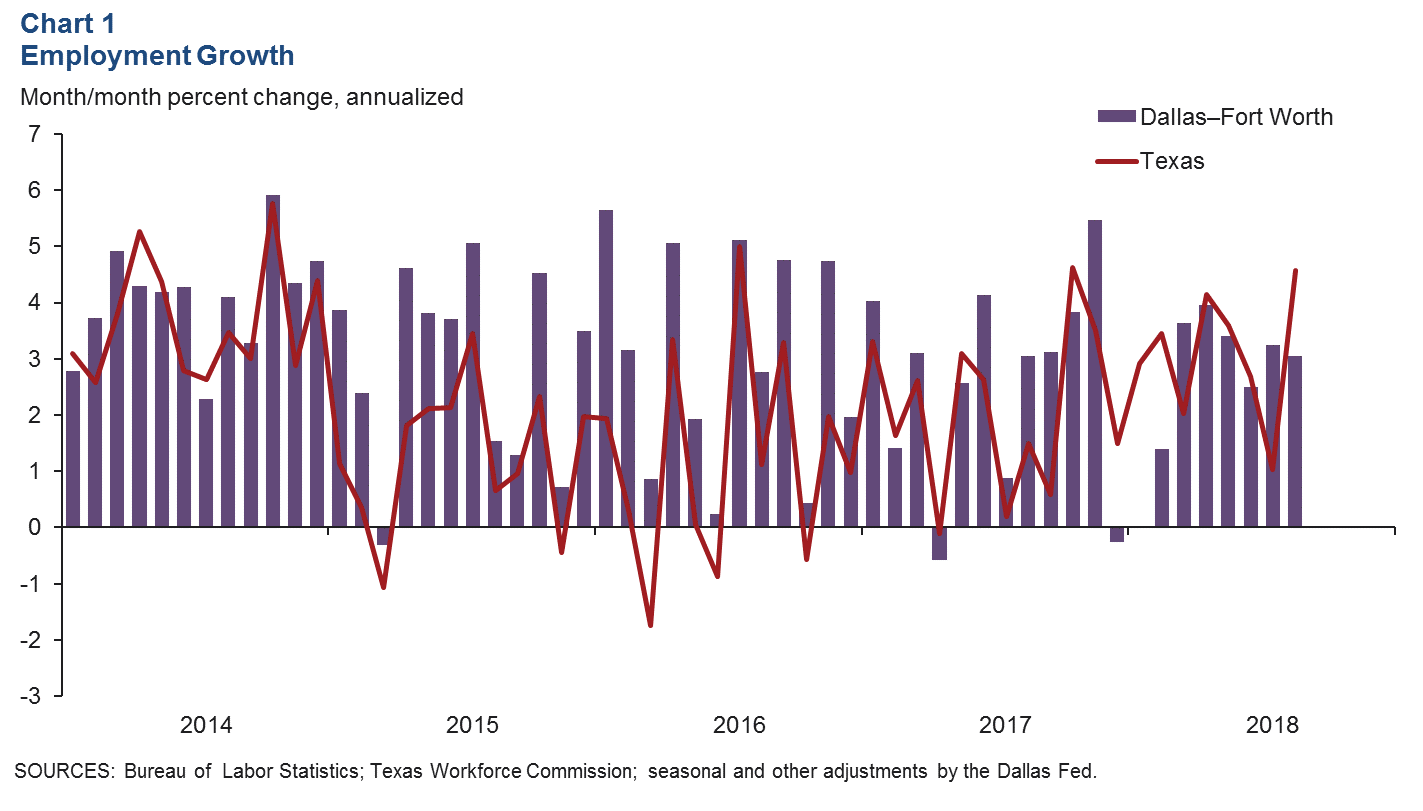
Labor Market Remains Tight
The jobless rate in both Dallas and Fort Worth was unchanged at 3.4 percent in August. Unemployment has averaged 3.5 percent in the metroplex over the past 12 months—lows not seen consistently since the high-tech boom of the 1990s (Chart 2). Unemployment in both metros remains below the state and U.S. rates. The labor force has grown an annualized 3.0 percent in Dallas and 2.3 percent in Fort Worth through August this year, compared with 2.6 percent for the state.
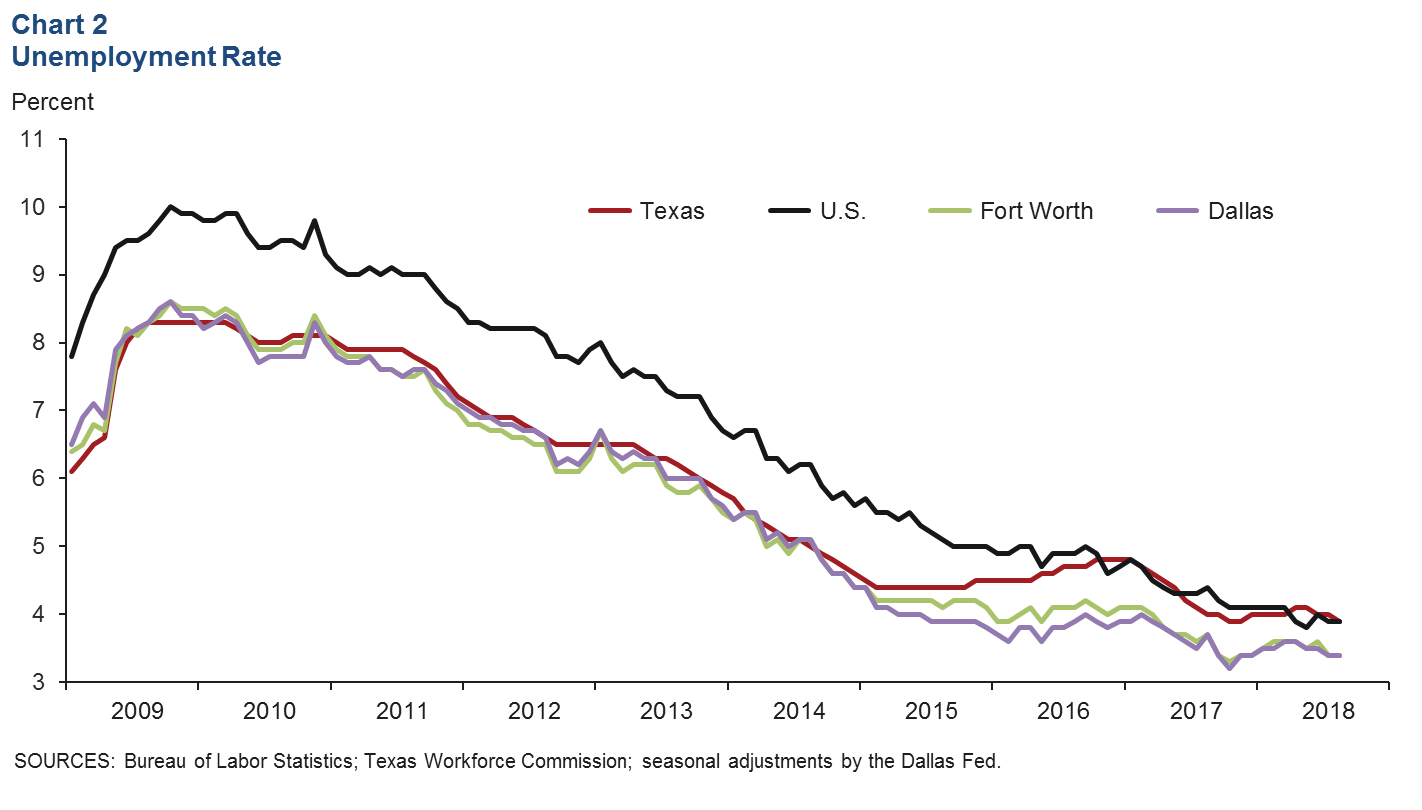
Business-Cycle Indexes
Growth in the Dallas and Fort Worth business-cycle indexes remained strong in August, supported by steady job growth and low unemployment in the metroplex (Chart 3). The Dallas index expanded an annualized 5.4 percent, similar to July’s red-hot rate. Growth in the Fort Worth index was 3.0 percent—in line with its long-run average. Year over year in August, the Dallas index rose 4.4 percent and the Fort Worth index was up 4.0 percent.
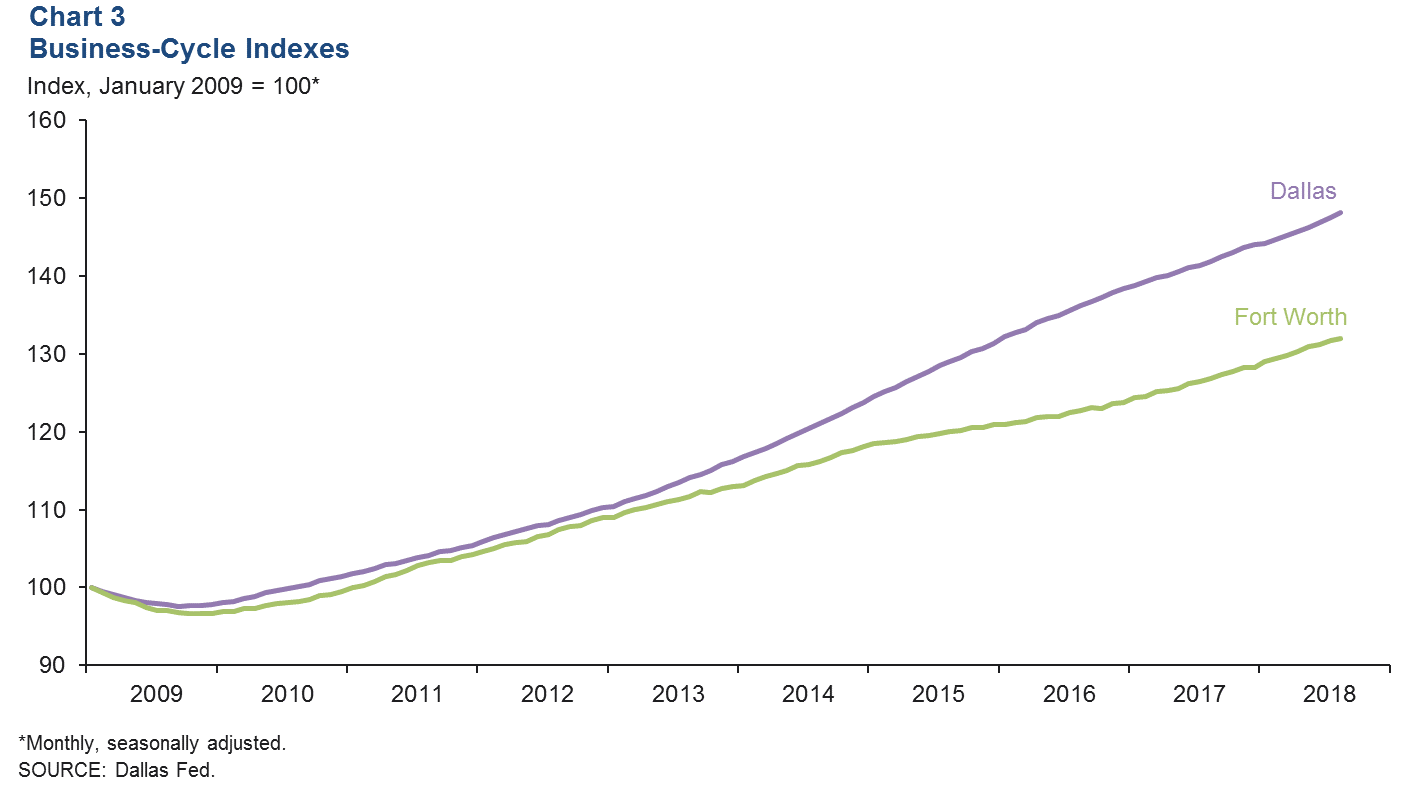
Loan Volume
Loan volume at banks headquartered in DFW expanded 7.2 percent year over year in the second quarter, faster than at all banks headquartered in the state (Chart 4). Growth in loan volumes was widespread across various categories. Commercial real estate loan volumes saw the swiftest growth over the period, driven by strength in multifamily lending. Residential real estate loan volumes rose rapidly as well, while commercial and industrial loans—which businesses use for working capital or to finance equipment purchases—saw moderate growth. Consumer loan volumes were down in the second quarter compared with year-ago levels.
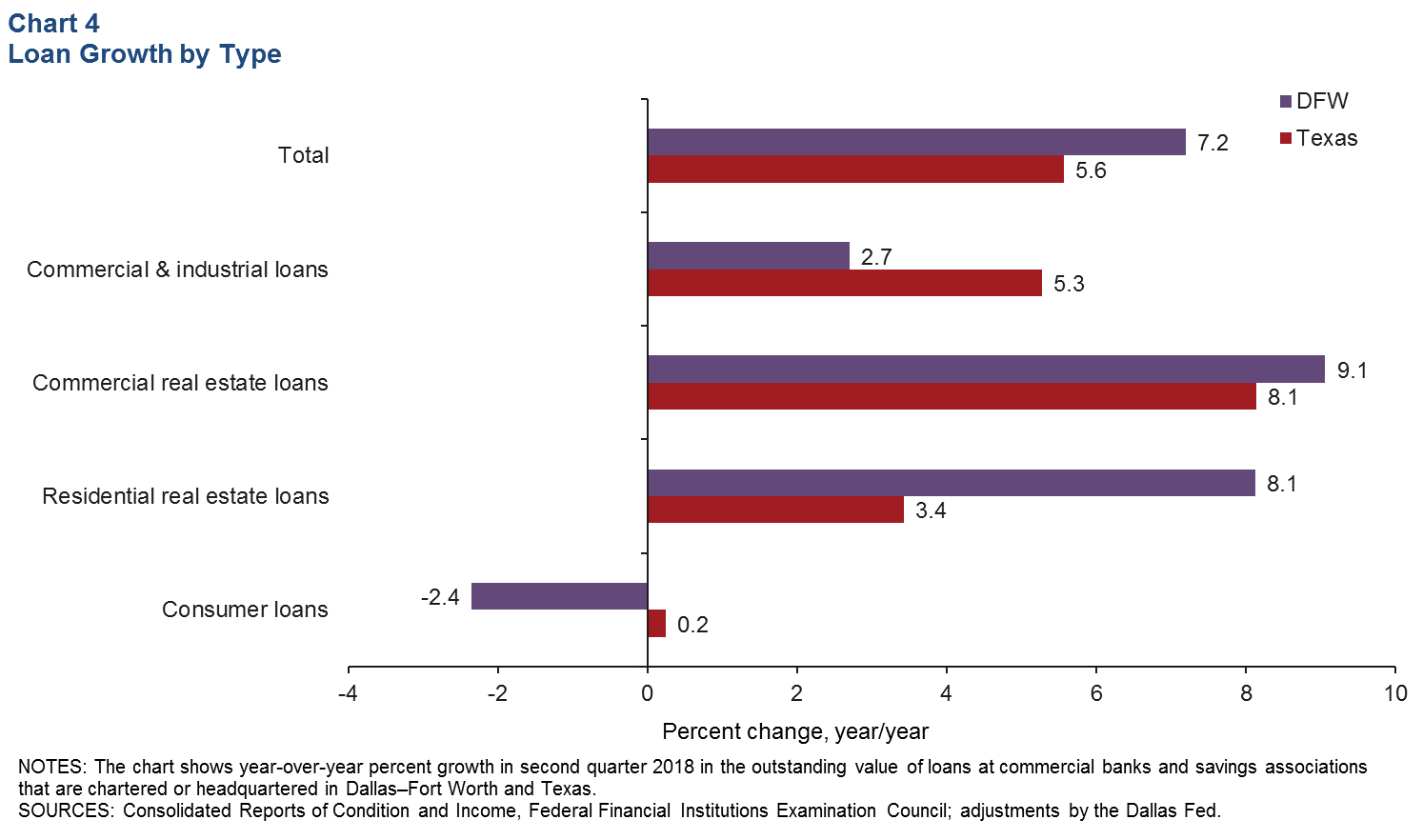
Median Household Income
Dallas–Fort Worth’s inflation-adjusted median household income climbed 5.6 percent in 2017 to $68,826 (Chart 5). The rate was the briskest among the large Texas metros and faster than the 4.7 percent growth turned in by both the state and nation. Median household income in DFW was higher than in Texas and the U.S. From 2011 to 2017, DFW’s 2.1 percent inflation-adjusted annual income growth was second only to Austin among the major Texas metros and exceeded the nation’s 1.9 percent increase.

Gross Domestic Product
Inflation-adjusted GDP for DFW expanded 3.9 percent in 2017, nearly double the 2.1 percent increase for all U.S. metropolitan areas combined and a full percentage point faster than its long-term average pace of 2.8 percent (Chart 6). DFW placed No. 41 among 383 U.S. metros in output growth last year; however, Austin and San Antonio outperformed DFW, with Austin ranking No. 9 and San Antonio No. 30.
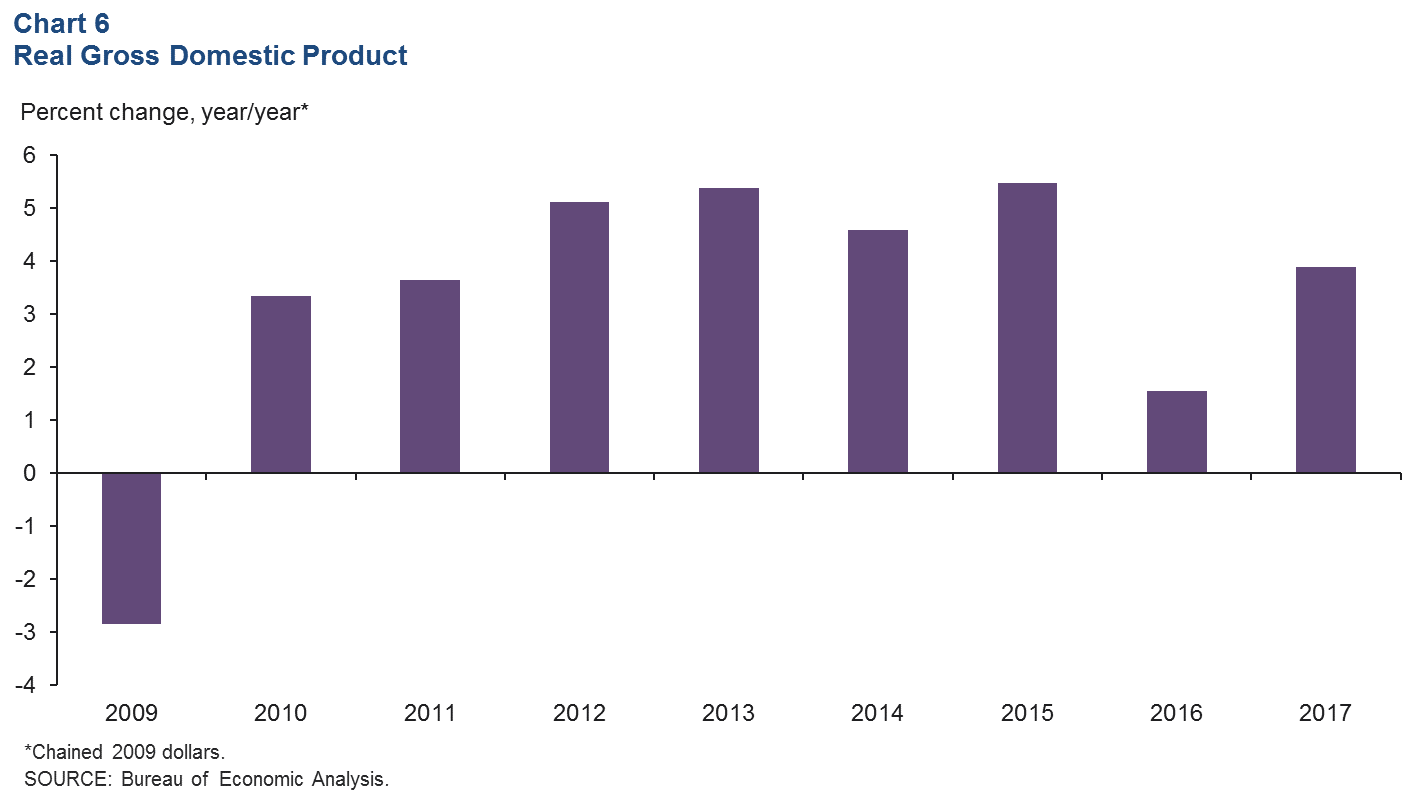
Most sectors saw output expand last year, with natural resources and mining leading the growth at 20.1 percent. Growth was strong in transportation and warehousing at 8.2 percent, financial activities at 5.1 percent and education and health services at 4 percent. DFW is the fourth-largest metropolitan statistical area in the U.S., with real GDP of nearly $480 billion.
NOTE: Data may not match previously published numbers due to revisions.
About Dallas–Fort Worth Economic Indicators
Questions can be addressed to Laila Assanie at laila.assanie@dal.frb.org. Dallas–Fort Worth Economic Indicators is published every month on the Tuesday after state and metro employment data are released.